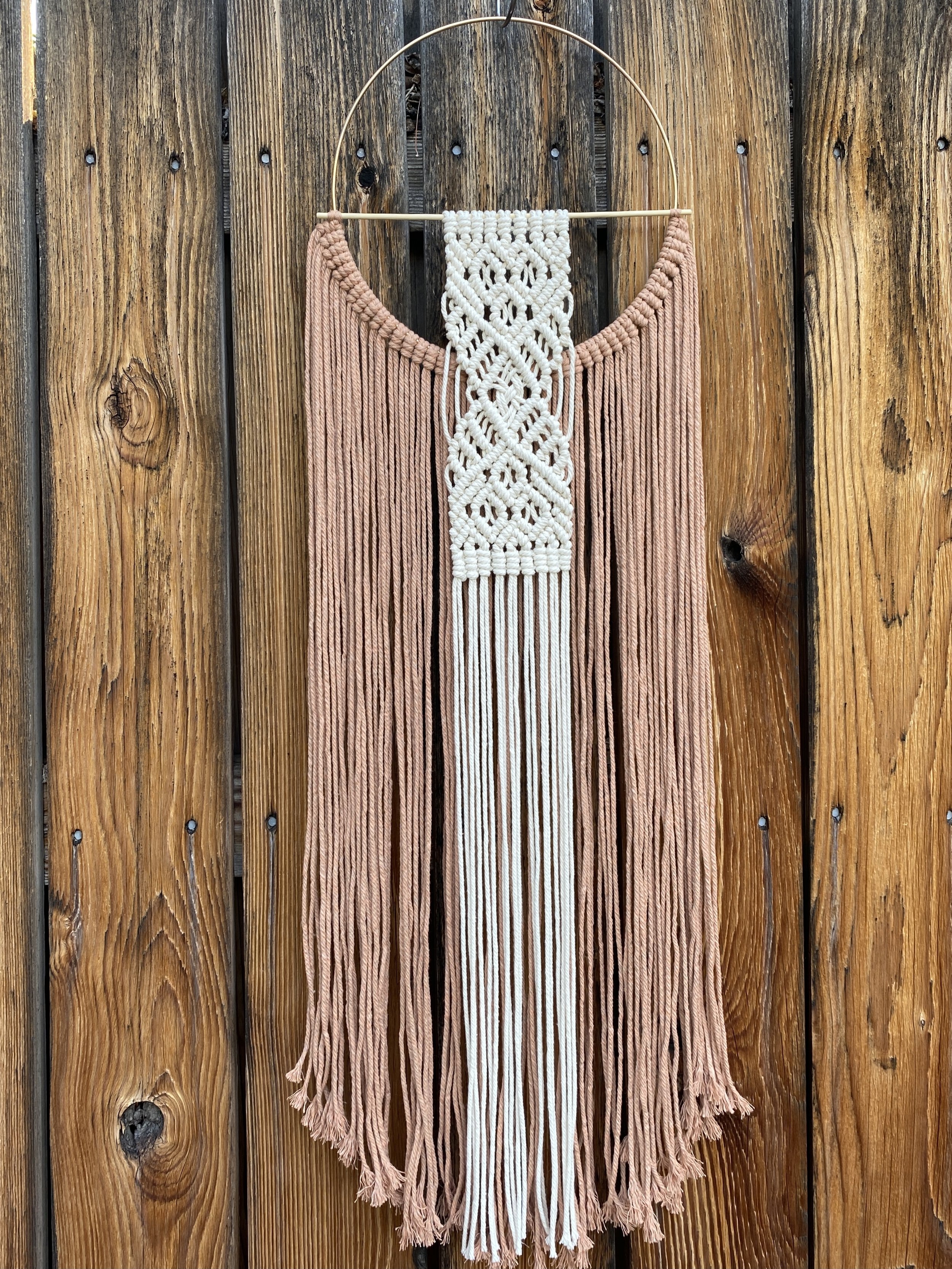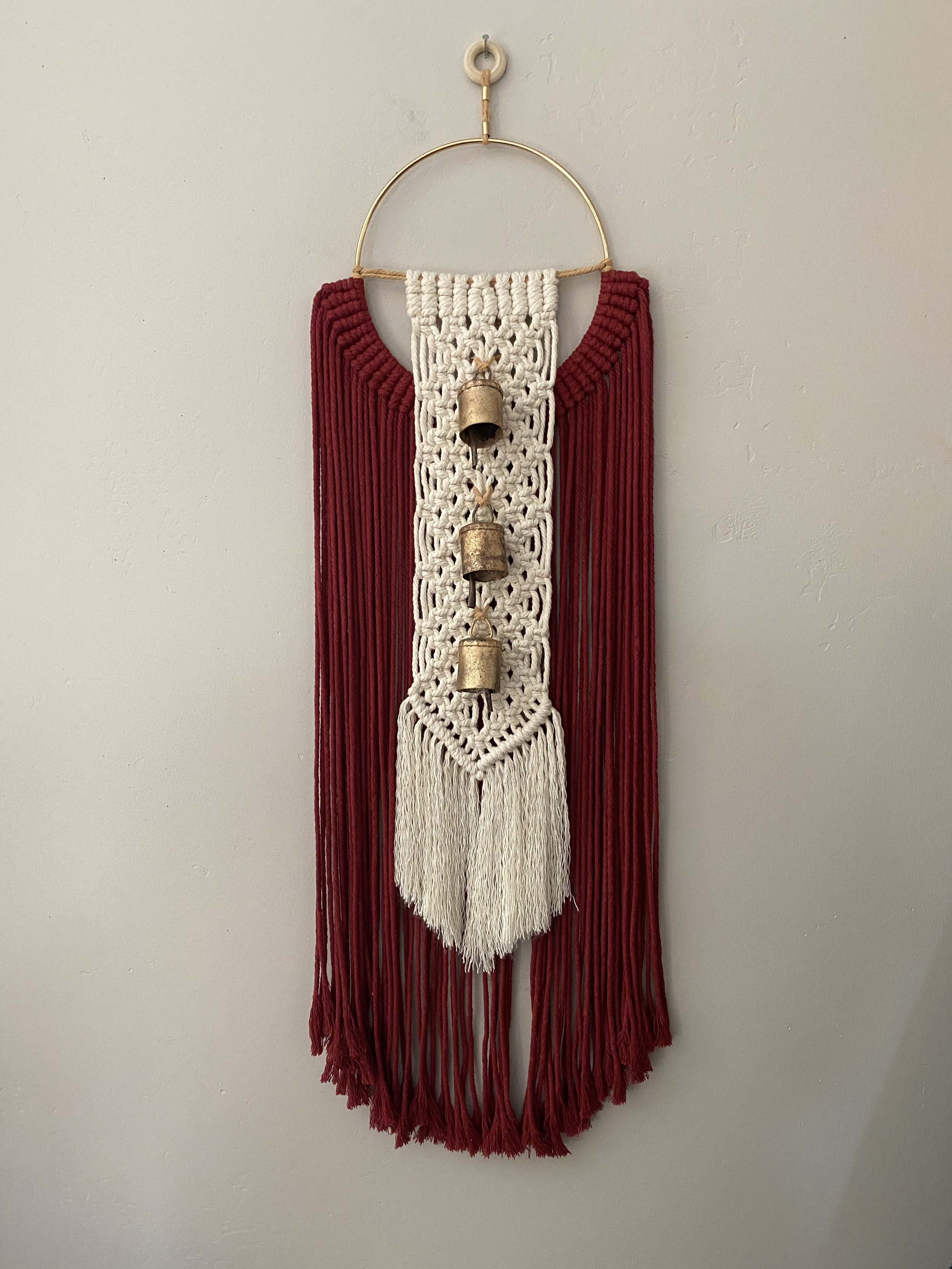/ˈmakrəˌmā/ noun
the art of knotting cord or string in patterns to make decorative items.
fabric or items made by knotting cord in patterns.
mac·ra·mé
Even though decorative knotting can be traced back to 3rd century China, where it adorned ceremonial textiles and wall hangings, the art of macramé gained worldwide traction in the 13th century.
Arabic weavers are credited with the origination of macramé, where they used decorative knotting to finish the loose ends of hand woven textiles. Sailors are likely the ones that kept the art alive, however.
Already versed in practical knot tying aboard ship, decorative macramé was used by sailors as a way to keep hands and minds busy on long voyages. The sailors would then sell their creations when they arrived in port.
After the Victorian era, the art of macramé fell out of popularity, at least until the 1970s, where it made a vibrant and thorough comeback. The art is making a resurgence yet again, taking those 70’s plant hangers and wall hangings and giving them a new fresh vibe. And so I give you my take on a classic art form.

























